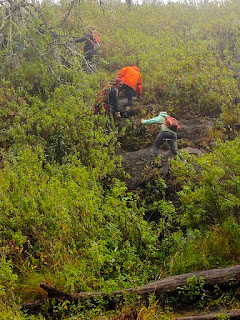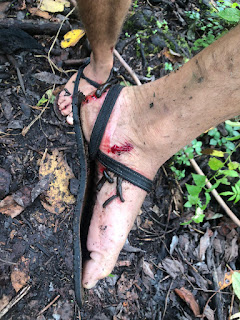I had a dream, which was not all a dream. The bright sun was extinguish’d, and the stars
Did wander darkling in the eternal space…
>Lord Byron
No worries about global warming back in the day. Just one year after the famous eruption of Tambora in 1815 and candles were being lit at lunchtime in Europe and temperatures were plummeting to such an extent that harvests failed and there were frosts in July and August! The so-called ‘year without a summer’.
To put the eruption in perspective, it was according to a United States Geological Survey, 100 times the size of the Mont St Helens eruption. The Tambora eruption is also thought to be the loudest sound ever heard by a human being and was recorded as being heard in Sumatra, more than 2,000 km away.
So just imagine if such an eruption were to take place now. Greta Thunberg would be without a job. She may even change tact and become an ambassador for global cooling advocacy. Who knows right? Such a possibility is hardly out of the question as there are hundreds of volcanoes across the globe that could potentially erupt at any time.
Today, hiking Tambora is no easy task even though the 1815 eruption reduced the height of the summit from around 4,300 meters (which would make it the highest peak in Indonesia) to only 2,851 meters. First of all, the volcano is located on the island of Sumbawa, which is far away from where most hikers probably live. This makes Tambora expensive to reach. From Jakarta, return tickets top Rp4 million. In addition to that, the airport itself is a long 4-5 hours drive to the village of Pancasila, the starting point for the most popular trail route to the summit.
The hike itself is not particularly arduous in terms of its steepness but the distance from the base camp to the summit is very far – a touch above 20km. This means a very long trek. The height gained during the trek is more than 2,000 meters as the elevation at base camp is only around 740m. As a result, the initial section of the climb can be very hot if you start in the morning. Luckily for us, we were blessed with some cloud cover and occasional rain. The nature was a refreshing change from Jakarta's concrete jungle.
Another consideration if you hike the volcano during the rainy season are leaches! These little bastards somehow find ways to get inside your hiking boots and enjoy a bloody feast at your expense.
There’s not much you can do about it really, and it’s not advisable to pull them off as they will react by releasing toxins into the wound, which so a fellow hiker told me, resulted in her friend never being able to digest meat again as some kind of perverse retribution dished out by the pesky leach god(s). Weird huh?
If you’re lucky – we were not – you will be rewarded at the summit with expansive views of the enormous caldera. We just had a lovely blanket of clouds in front of us.
That’s just the way it goes sometimes. So if I want to see the caldera for myself, I’ll have to come back and hike the damn volcano again! Arggggggggggggg!!!!







Comments
Post a Comment